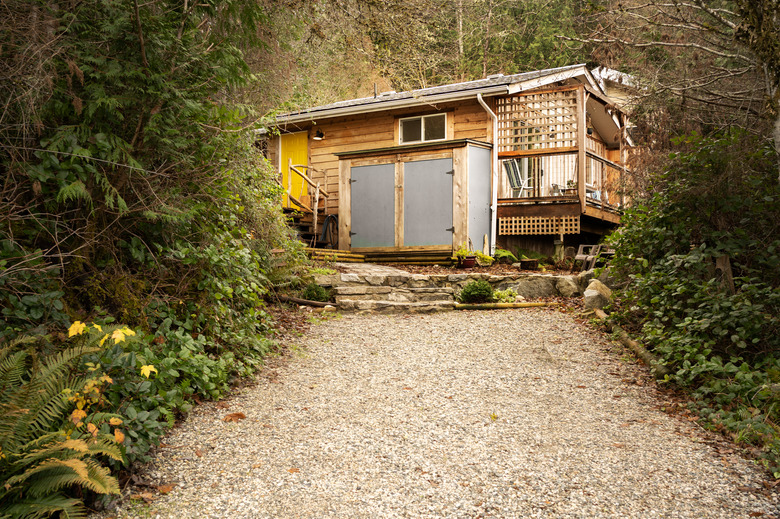Types Of Gravel For A Driveway
As a driveway material, gravel has the advantage of being relatively inexpensive and low-maintenance compared to other types of pavement. To build an attractive and stable driveway, however, it's important to choose the right kind of gravel.
Crushed Stone
Crushed Stone
Many types of gravel consist of small, sharply angled pieces of stone made by mechanically crushing quarried natural stone. The color of the gravel varies widely depending on the type of stone it's made from, and some mixtures contain a variety of stone types and colors. Common colors of crushed stone include gray, red, blue and white.
Crushed stone works well for driveways and paths because the angular pieces tend to hold together as the gravel settles, creating a stable, solid surface that doesn't shift or migrate under the weight of vehicles and foot traffic.
Pea Gravel
Pea Gravel
Pea gravel consists of small, naturally weathered pieces of stone that have generally rounded edges and are typically available in multicolored mixtures. This type of gravel doesn't work as well for driveways and paths because the rounded stone doesn't lock together the same way that crushed stone does, and it is more likely to move under traffic.
To use pea gravel successfully in a driveway, use a relatively thin layer of gravel over a stable base, and use edging to help keep the gravel in place.
Gravel Sizes
Gravel Sizes
In general, driveway gravel should be relatively large, between about 3/8 and 3/4 inch in diameter, as compared to the gravel used for footpaths, which is typically 1/4 to 3/8 inch in diameter.
Another factor to consider is the amount of very small granular material, called "fines," in the gravel. Gravel with a large amount of fines will lock together into a solid surface, but it will not provide much drainage. Consequently, clean rock without a substantial amount of fines is often used as a base for new driveways, and a mixture with a high fine content is used as a surface layer and to top-dress existing driveways.
Base layers are usually made from significantly larger gravel, with individual pieces 2 inches or more in diameter; the base layer for a driveway is typically about 6 inches thick, as compared to about 2 inches for a gravel footpath.
Edging Materials
Edging Materials
In some landscaping applications, gravel can be contained with stone, concrete or metal edging that extends vertically above the level of the gravel. But such a barrier can be a problem at the edges of driveways, especially at the driveway threshold, where vehicles need to be able to drive over the edge.
Edging solutions for driveways include concave concrete or masonry channels, which trap gravel but don't present a barrier to vehicles, and gently humped edges, which serve the same purpose but won't fill with gravel the way that channels eventually will.
